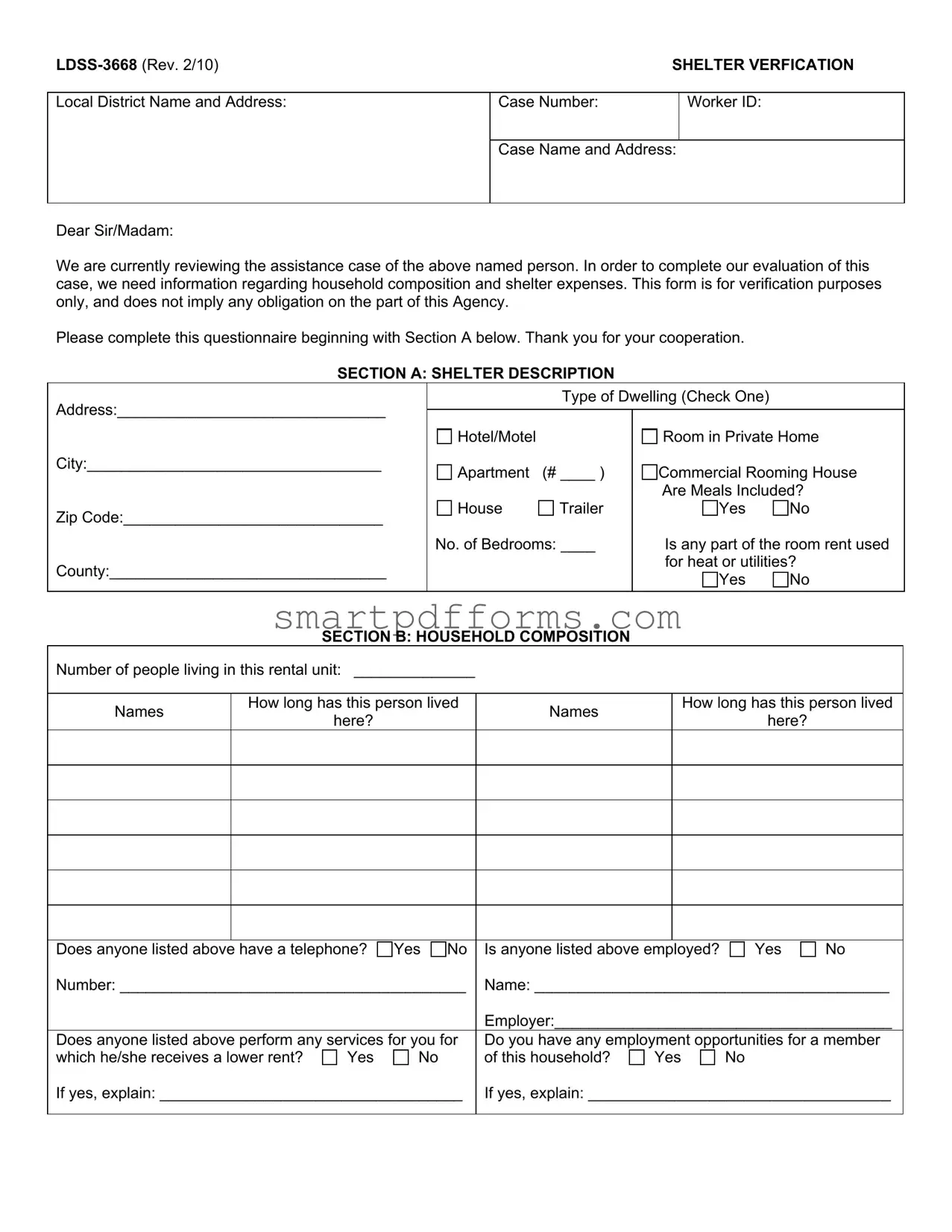Blank Ldss 3668 PDF Template
The LDSS-3668 form, revised in February 2010, serves as a critical tool for verifying shelter conditions and expenses for individuals seeking assistance. Its primary purpose is to gather detailed information about the household composition, shelter type, related expenses, and landlord or housing provider, ensuring a thorough evaluation of an assistance case. By meticulously completing this form, vital shelter verification is facilitated, supporting the comprehensive review process.
If you need to provide shelter verification for an assistance review, ensure accuracy and completeness by clicking the button below to fill out the LDSS-3668 form.
Make This Document Now


